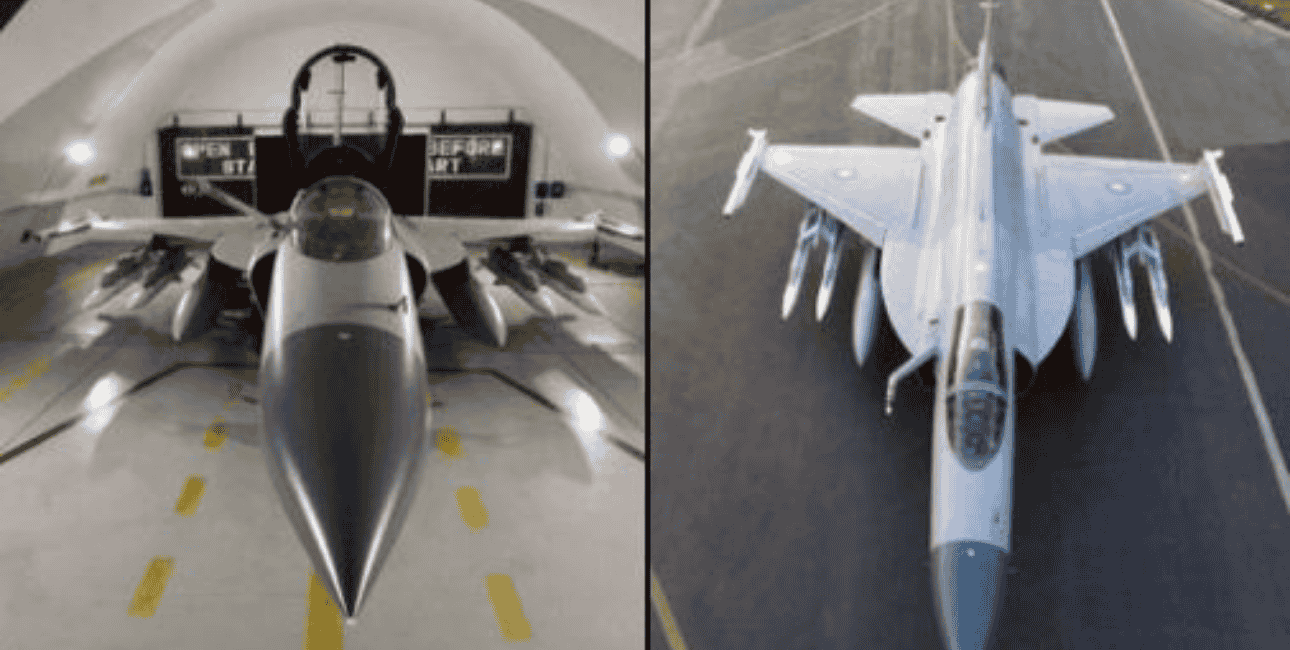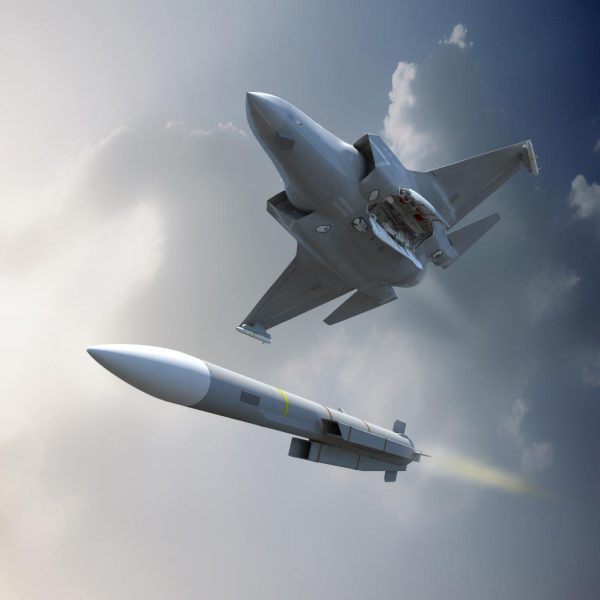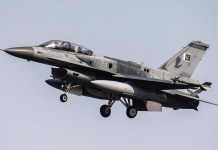Amid escalating India-Pakistan tensions, reports have surfaced claiming that the Pakistan Air Force has received express deliveries of China’s advanced PL-15 very long-range air-to-air missiles.
PAF has released pictures of its latest JF-17 Block III fighter aircraft armed with PL-15 Beyond Visual Range (BVR) Air-to-air missiles, equipped on its dual racks.
According to ClashReport, which extensively reports on defense and has nearly 500,000 followers, claims that the PL-15 missiles seen on the PAF aircraft were drawn from the internal stocks of China’s People’s Liberation Army Air Force (PLAAF), rather than the export-variant PL-15E.
If the reports are accurate, then it would signify an urgent arms transfer from Beijing to Islamabad at a critical juncture when rising tensions between India and Pakistan could flare into an all-out war at any time.
If that happens, the advanced PL-15 missiles could provide PAF with a tactical advantage due to their ‘long-range.’ It will allow the PAF fighter jets to engage the IAF’s aircraft at extreme distances.

Official sources have not confirmed the reports. However, this would broadly align with Beijing and Islamabad’s strengthening defense partnership.
It will also underscore China’s ability to scale up production of crucial weapon systems at critical moments and transfer them to allies without bureaucratic delays.
PL-15: China’s Most Advanced AAM
The PL-15 is at the heart of China’s air-combat plans. Beijing showcased this advanced air-to-air missile at the Zhuhai air show in November of last year.
Developed by the Aviation Industry Corporation of China (AVIC), a state-owned Chinese aerospace conglomerate, the PL-15 is an active radar-guided long-range air-to-air missile (AAM).
It uses a dual-pulsed solid-propellant rocket and has an AESA (active electronically scanned array) radar. The AESA radar is combined with a two-way datalink, enabling precise targeting and mid-course corrections, making it a highly versatile weapon.
The missile combines speed with maneuverability. Its claimed operational range is 200 – 300 km (120 – 190 miles), and it can reportedly travel at peak speeds of Mach 5+.
The missile is cleared on J-20, J-10C, J-15, J-16, J-11B, and JF-17 Block-III. The Chengdu J-20 stealth fighter can carry four PL-15s in its internal bay.
At the Zhuhai Air Show last year, China showcased the PL-15 missiles with folding fins. The modification could allow J-20 to carry six of these missiles instead of the four it presently carries.
The export variant of the missile, PL-15E, has a claimed range of 145 km. However, some reports have claimed that the missiles seen on the PAF’s JF-17 Block III fighter aircraft were the standard PL-15s, not the export variant PL-15E.
If true, this would significantly enhance the operational range of PAF’s JF-17 fighter jets.
EurAsian Times cannot independently verify these claims.
PL-15 Vs AIM-120 Vs Meteor
The PL-15 likely entered PLAAF service in 2018 and is often touted as Beijing’s answer to the U.S. AIM-120D AMRAAM, which has a range of approximately 100 miles and can achieve a speed of Mach 4.
As such, the PL-15 beats U.S. AIM-120D AMRAAM in terms of speed and range.
It is also comparable to the European MBDA Meteor, known for its ramjet propulsion and large no-escape zone.
India’s most advanced fighter jet, Rafale, can carry Meteor and MICA, long-range air-to-air missiles. The Meteor’s range is 60 – 120 miles (100 – 200 km), depending on the launch platform, altitude, and target dynamics. It can reach speeds exceeding Mach 4.
In terms of range, Meteor is comparable to the export variants of the PL-15. However, the standard PL-15 is claimed to have a longer range than the Meteor.
Additionally, while PL-15 can reach speeds exceeding Mach 5, compared to Meteor’s Mach 4, it is worth noting that Meteor utilizes a ramjet engine, which enables it to sustain high speeds throughout its flight, including during the terminal phase of engaging a target aircraft.
In contrast, the PL-15 uses a dual-pulse solid-fuel rocket motor. Solid propellant missiles burn out after only a short period, but their burn-out speed can be significantly higher than that of a missile using a ramjet sustainer. So, while PL-15 can achieve peak speeds exceeding Mach 5, it cannot sustain this speed throughout its flight.

The Meteor’s data link also has two-way capability, so the pilot can re-target the missile while it is already in flight. The pilot can also view the missile’s fuel, energy, and tracking state in real-time.
So, while Meteor and PL-15 appear similar and equally lethal on paper, it is worth noting that Meteor has undergone significantly more extensive testing, including live-fire drills.
A testament to Meteor’s capabilities is the fact that the missile has been integrated into Rafale, Gripen, Eurofighter Typhoon, and even fifth-generation fighters like the F-35 and South Korea’s under-development KF-21.
Enter Russia’s R-37M: Should India Buy Russia’s Latest AAM
The potential longer range of PL-15 missiles could be a headache for the IAF. However, Russia’s latest Beyond Visual Range (BVR) R-37M missiles could be an option for the IAF to even out the PAF advantage.
The R-37M has a reported range of 300 to 400 km and can reach hypersonic speeds of Mach 6. These missiles are also battle-tested. Russia has extensively used R-37M in the Ukraine war. According to reports, these missiles pose the main threat to the Ukrainian Air Force. Russian MiG-31 aircraft have reportedly shot down several Ukrainian aircraft, mainly using the long-range R-37M. Some media reports claimed that the Ukrainian F-16, shot down by Russia earlier this month, was also downed by an R-37M missile.
F-16 Shootdown: Why U.S. Could Be Behind The 2nd Confirmed Crash Of Ukraine’s Fighting Falcon: OPED
Notably, it has also been integrated with the Su-30SM2 fighter jets.
Su-30 is the mainstay of the IAF. India already has over 260 Su-30MKIs. Late last year, HAL signed a Rs 13,500 crore (US$1.5 billion) deal to procure 12 additional Sukhoi Su-30MKI aircraft and associated equipment.
Additionally, India is also considering upgrading its Su-30MKI fleet to the latest Su-30SM2 variants. The Rs 63,000 crore (US$7.5 billion) deal could see as many as 84 Su-30MKIs upgraded to the SM2 variant level.
Besides, Russia has also shown interest in selling its R-37M missiles to India. At Aero India 2025, Russia proposed the sale of its advanced R-37M long-range air-to-air guided missile, also known as RVV-BD in its export version, to India. Russia has reportedly offered its domestic production in India in a joint venture.
There are also talks of integrating the R-37M on Rafale fighters.
Former IAF fighter Pilot Vijainder K Thakur believes that the IAF should consider domestic production of the R-37M as it would ensure that Indian fighters can effectively engage adversaries and maintain a strategic advantage in aerial combat.
F-16 Shootdown: Why U.S. Could Be Behind The 2nd Confirmed Crash Of Ukraine’s Fighting Falcon: OPED
Revenge For MiG-21 Bison
In 2019, following the Balakot airstrikes, Pakistan downed an Indian MiG-21 Bison using its F-16 fighter jet and AMRAAM missiles. During that duel, the lack of long-range missiles in India’s arsenal proved detrimental to the IAF.
Since then, India has added Rafale fighter jets equipped with Meteor missiles. India also ordered a significant quantity of R-77 BVR (Beyond Visual Range) missiles integrated with Su-30 MKI fighter jets. Both these missiles have a range of around 100-200 km. The PL-15’s reported range is 300 km.
However, the Russian R-37M missiles have shown their prowess in the Ukraine conflict, where they shot down numerous aircraft and possibly even an F-16 earlier this month.
Integrating these missiles with India’s existing Su-30MKI or upgrading these fighters to Su-30SM2 variants could be an option.
However, former IAF Group Captain Ajay Ahlawat believes that a significant amount of work will need to be done on the Su-30 MKIs to integrate the R-37 with them.
Instead, he says, India should focus on the homegrown Astra series of BVR missiles.

The Defense Research and Development Organization (DRDO) is currently developing Astra Mk-III, officially renamed Gandhiva—the legendary bow of Arjuna from the Mahabharata. It has a range of 340 kilometers when the target is at an altitude of 20 kilometers and 190 kilometers when the target is at a lower altitude of 8 kilometers.
The missile will be deployed on the IAF’s Sukhoi Su-30MKI jets and the Light Combat Aircraft Tejas.
When integrated, this will be one of the longest-range air-to-air missiles in the world, even surpassing China’s PL-15.
However, the threat of escalation looms large, and the IAF must strategize how to deal with the threat of PL-15 missiles in the current scenario with the available resources.
- Sumit Ahlawat has over a decade of experience in news media. He has worked with Press Trust of India, Times Now, Zee News, Economic Times, and Microsoft News. He holds a Master’s Degree in International Media and Modern History from the University of Sheffield, UK.
- VIEWS PERSONAL OF THE AUTHOR.
- He can be reached at ahlawat.sumit85 (at) gmail.com




